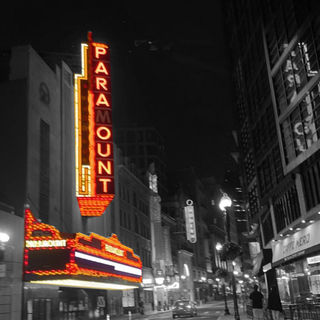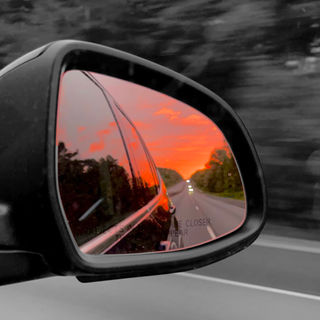
Gavin Ryan, 15
Photography
Lead by Carly Benson at Watertown HS under Supervising Practitioner Dan Dressler.
Lesson plan originally created by Dan Dressler. Additional components such as reflection activities and class materials created by Carly Benson. Lesson entirely taught by Carly Benson.
Essential Questions:
-
How can deconstruction and reconstruction help uncover and communicate new perspectives?
-
Why do artists deconstruct and reconstruct photos?
-
How can photography help us see across time and space?
-
How can breaking something down into smaller parts help us to seethe bigger picture?
Photo Montages
Part 1 and 2:
Landscape and Kaleidoscope Montages

Part 3:
[E]Motion Montages





















Mid-Project Peer Review
I had difficulty figure out how I wanted to show that motion of each image. I solved this by continuously experimenting with cutting and moving different parts of the image. I also had premade images in my mind already that I could refer to.
During my three photos in motion I was struggling to come up with ideas on how I should format my images. With lots of trial and error, I was finally able to create a study I was happy with.
I think my kaleidoscope montage was difficult in general. Some of my layers kept messing up by moving and not editing the way I wanted to edit them. I fixed this problem by creating new layers with the same photos and re-doing them so that it could look more clean and neat.
I did notice a lot but It helped me notice how smooth the movement could be between each image even if I was roughly cutting the images. I also noticed how you could make it seem like there were portals almost teleporting the characters to different parts of the image.
During the first study when I was copying and pasting the squares I truly started to see how pretty each different block of the sunset I was breaking down was.
When deconstructing these pictures and during the partner critique, I noticed that I could do interesting things with the hands. By the way I positioned the photos, I could line the hands up to show connection, as well as movement.
While breaking down the One Grid Landscape photo I didn't realize how pretty all the colors looked together, not to mention since I took the picture through a window you can see some of the lights and it kinda looks like they’re just floating outside, I obviously noticed the lights in the sky but I didn't notice how the colors look against each other.
Some emotions that could be conveyed are anger, or some sort of freedom. I think it worked well because I get that vibe when I look at the photos.
I was trying to show stress while my model was doing their school work. I think I displayed stress well by making the photos transparent because there is alot happening but it is still controlled and organized.
I feel like I was able to convey a calm type of emotion, in parts 1 and 2 but in 3 I feel like I conveyed more of a rushed type of emotion. I also discovered these emotions along the way.
Color and Composition

My most successful moment was being able to figure how to work the all the tiny squares. As well as figure out which rows to show and not show in order to properly show the movement of my three images. I like the complicaticatedness of that image and how you really need to focus to see the motion. I also like the collage aspect it gives to the motion and the image.
I think my most successful moment of deconstruction and reconstruction was during the kaleidoscope study. I was hesitant that the final product was going to be something that I was happy with, but in the end each rectangle came together to create something I was proud of.
My kaleidoscope one was my most successful one. I overcame a lot of challenges while making it. A new perspective it taught me was combining ways. I was able to make it look a lot cooler by combining a lot of different edits that photoshop offers.
I’m not entirely sure what I would call my most successful moment with this project. There are parts of all the studies that I liked, and parts that I didn’t love. But I think my favorite part of creating a new perspective was in my second study when I started playing with the layers of the project. Instead of taking away the original photo in the background like we did in the first part of this unit, I left the background which gave a sort of glitchy look to it, which I thought was cool. But I also went back and forth between having the background and not having it, and it honestly looked pretty cool both ways.
Graphic Design
Vector Duck Project

Abstract Type

Animated GIF


Carly Benson
Carly is an art educator, designer, and artist currently residing in Somerville, Massachusetts. Her love for the arts and education began early and plays a critical role in how she has navigates through her life. Often looking through an art, design, and systems thinking lens, she prioritizes curiosity and multidisciplinary thinking toward both education and creating.
Carly is excited about both the social-emotional development of students as well as the critical thinking and culturally relevant opportunities of each lesson. She believes that scaffolding a tangible, translatable, and student-led experience is critical to student engagement, ownership, and autonomy in the learning experience.
She is excited to put her multidisciplinary systems thinking, transformative social-emotional values, and student constructed learning approach to create a space for students to discover themselves and their relationship to the world around them through visual art and design education. Carly believes art and design education is vital to the understanding of process, identity, empathy, and critical thinking skills that apply far beyond the classroom.


























































